Antony Thomas
A Task and Motion Planning Framework Using Iteratively Deepened AND/OR Graph Networks
Mar 10, 2025Abstract:In this paper, we present an approach for integrated task and motion planning based on an AND/OR graph network, which is used to represent task-level states and actions, and we leverage it to implement different classes of task and motion planning problems (TAMP). Several problems that fall under task and motion planning do not have a predetermined number of sub-tasks to achieve a goal. For example, while retrieving a target object from a cluttered workspace, in principle the number of object re-arrangements required to finally grasp it cannot be known ahead of time. To address this challenge, and in contrast to traditional planners, also those based on AND/OR graphs, we grow the AND/OR graph at run-time by progressively adding sub-graphs until grasping the target object becomes feasible, which yields a network of AND/OR graphs. The approach is extended to enable multi-robot task and motion planning, and (i) it allows us to perform task allocation while coordinating the activity of a given number of robots, and (ii) can handle multi-robot tasks involving an a priori unknown number of sub-tasks. The approach is evaluated and validated both in simulation and with a real dual-arm robot manipulator, that is, Baxter from Rethink Robotics. In particular, for the single-robot task and motion planning, we validated our approach in three different TAMP domains. Furthermore, we also use three different robots for simulation, namely, Baxter, Franka Emika Panda manipulators, and a PR2 robot. Experiments show that our approach can be readily scaled to scenarios with many objects and robots, and is capable of handling different classes of TAMP problems.
An Incremental Sampling and Segmentation-Based Approach for Motion Planning Infeasibility
Jan 20, 2025Abstract:We present a simple and easy-to-implement algorithm to detect plan infeasibility in kinematic motion planning. Our method involves approximating the robot's configuration space to a discrete space, where each degree of freedom has a finite set of values. The obstacle region separates the free configuration space into different connected regions. For a path to exist between the start and goal configurations, they must lie in the same connected region of the free space. Thus, to ascertain plan infeasibility, we merely need to sample adequate points from the obstacle region that isolate start and goal. Accordingly, we progressively construct the configuration space by sampling from the discretized space and updating the bitmap cells representing obstacle regions. Subsequently, we partition this partially built configuration space to identify different connected components within it and assess the connectivity of the start and goal cells. We illustrate this methodology on five different scenarios with configuration spaces having up to 5 degree-of-freedom (DOF).
Safe motion planning with environment uncertainty
May 10, 2023



Abstract:We present an approach for safe motion planning under robot state and environment (obstacle and landmark location) uncertainties. To this end, we first develop an approach that accounts for the landmark uncertainties during robot localization. Existing planning approaches assume that the landmark locations are well known or are known with little uncertainty. However, this might not be true in practice. Noisy sensors and imperfect motions compound to the errors originating from the estimate of environment features. Moreover, possible occlusions and dynamic objects in the environment render imperfect landmark estimation. Consequently, not considering this uncertainty can wrongly localize the robot, leading to inefficient plans. Our approach thus incorporates the landmark uncertainty within the Bayes filter estimation framework. We also analyze the effect of considering this uncertainty and delineate the conditions under which it can be ignored. Second, we extend the state-of-the-art by computing an exact expression for the collision probability under Gaussian distributed robot motion, perception and obstacle location uncertainties. We formulate the collision probability process as a quadratic form in random variables. Under Gaussian distribution assumptions, an exact expression for collision probability is thus obtained which is computable in real-time. In contrast, existing approaches approximate the collision probability using upper-bounds that can lead to overly conservative estimate and thereby suboptimal plans. We demonstrate and evaluate our approach using a theoretical example and simulations. We also present a comparison of our approach to different state-of-the-art methods.
* arXiv admin note: text overlap with arXiv:2101.11566
Revisiting the Minimum Constraint Removal Problem in Mobile Robotics
May 02, 2023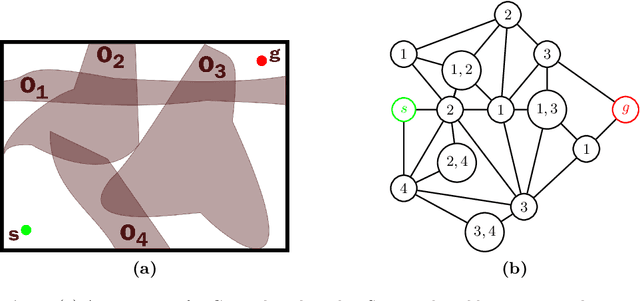

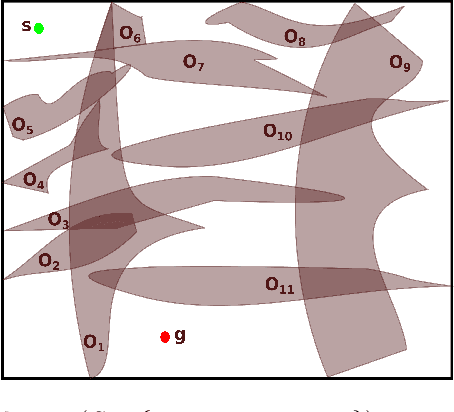

Abstract:The minimum constraint removal problem seeks to find the minimum number of constraints, i.e., obstacles, that need to be removed to connect a start to a goal location with a collision-free path. This problem is NP-hard and has been studied in robotics, wireless sensing, and computational geometry. This work contributes to the existing literature by presenting and discussing two results. The first result shows that the minimum constraint removal is NP-hard for simply connected obstacles where each obstacle intersects a constant number of other obstacles. The second result demonstrates that for $n$ simply connected obstacles in the plane, instances of the minimum constraint removal problem with minimum removable obstacles lower than $(n+1)/3$ can be solved in polynomial time. This result is also empirically validated using several instances of randomly sampled axis-parallel rectangles.
Computational Tradeoff in Minimum Obstacle Displacement Planning for Robot Navigation
Feb 14, 2023



Abstract:In this paper, we look into the minimum obstacle displacement (MOD) planning problem from a mobile robot motion planning perspective. This problem finds an optimal path to goal by displacing movable obstacles when no path exists due to collision with obstacles. However this problem is computationally expensive and grows exponentially in the size of number of movable obstacles. This work looks into approximate solutions that are computationally less intensive and differ from the optimal solution by a factor of the optimal cost.
Minimum Displacement Motion Planning for Movable Obstacles
Apr 27, 2022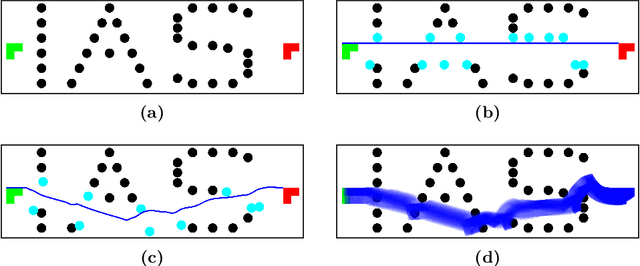

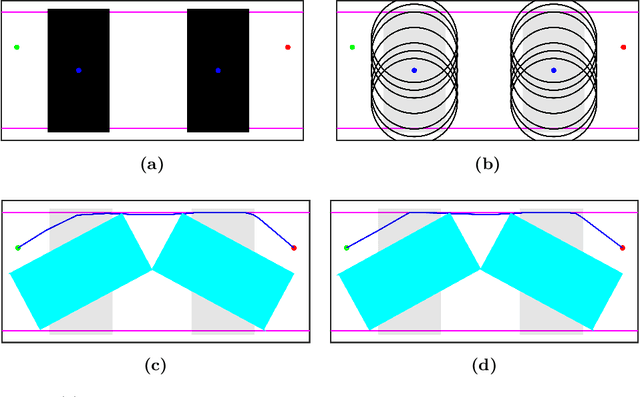
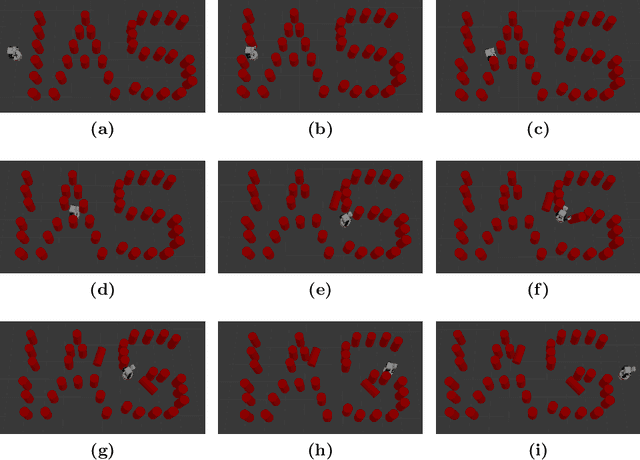
Abstract:This paper presents a minimum displacement motion planning problem wherein obstacles are displaced by a minimum amount to find a feasible path. We define a metric for robot-obstacle intersection that measures the extent of the intersection and use this to penalize robot-obstacle overlaps. Employing the actual robot dynamics, the planner first finds a path through the obstacles that minimizes the robot-obstacle intersections. The metric is then used to iteratively displace the obstacles to achieve a feasible path. Several examples are provided that successfully demonstrates the proposed problem.
Exact and Bounded Collision Probability for Motion Planning under Gaussian Uncertainty
Oct 12, 2021



Abstract:Computing collision-free trajectories is of prime importance for safe navigation. We present an approach for computing the collision probability under Gaussian distributed motion and sensing uncertainty with the robot and static obstacle shapes approximated as ellipsoids. The collision condition is formulated as the distance between ellipsoids and unlike previous approaches we provide a method for computing the exact collision probability. Furthermore, we provide a tight upper bound that can be computed much faster during online planning. Comparison to other state-of-the-art methods is also provided. The proposed method is evaluated in simulation under varying configuration and number of obstacles.
Task Allocation for Multi-Robot Task and Motion Planning: a case for Object Picking in Cluttered Workspaces
Oct 08, 2021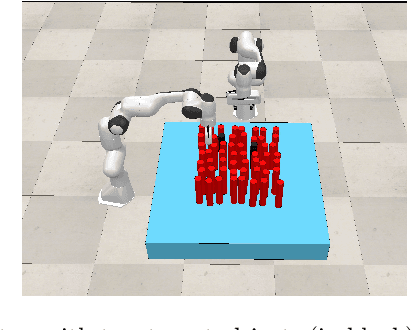
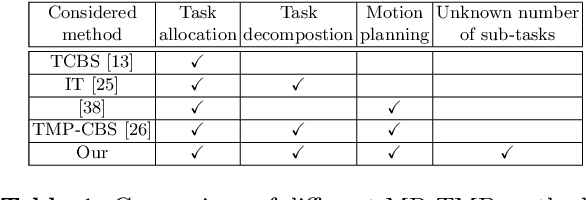

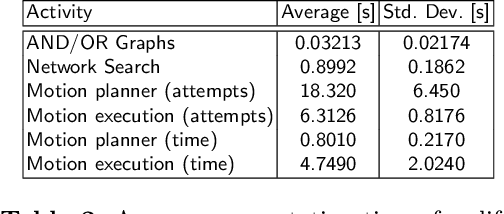
Abstract:We present an AND/OR graph-based, integrated multi-robot task and motion planning approach which (i) performs task allocation coordinating the activity of a given number of robots, and (ii) is capable of handling tasks which involve an a priori unknown number of object re-arrangements, such as those involved in retrieving objects from cluttered workspaces. Such situations may arise, for example, in search and rescue scenarios, while locating/picking a cluttered object of interest. The corresponding problem falls under the category of planning in clutter. One of the challenges while planning in clutter is that the number of object re-arrangements required to pick the target object is not known beforehand, in general. Moreover, such tasks can be decomposed in a variety of ways, since different cluttering object re-arrangements are possible to reach the target object. In our approach, task allocation and decomposition is achieved by maximizing a combined utility function. The allocated tasks are performed by an integrated task and motion planner, which is robust to the requirement of an unknown number of re-arrangement tasks. We demonstrate our results with experiments in simulation on two Franka Emika manipulators.
MPTP: Motion-Planning-aware Task Planning for Navigation in Belief Space
Apr 10, 2021
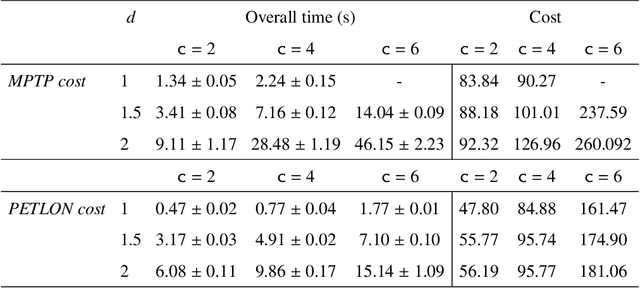
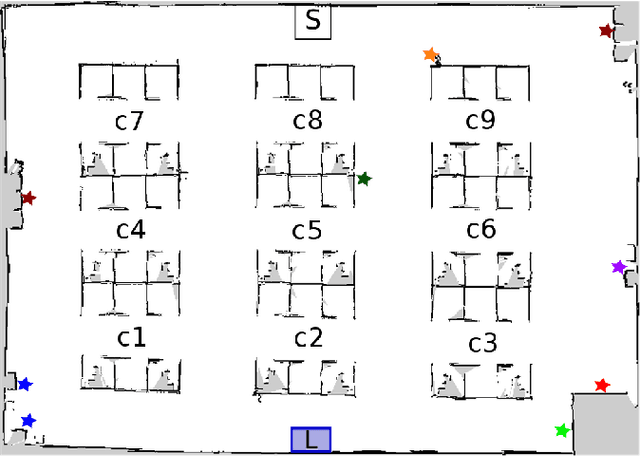
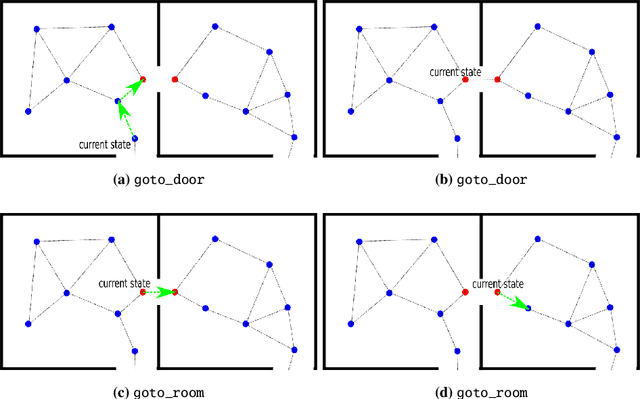
Abstract:We present an integrated Task-Motion Planning (TMP) framework for navigation in large-scale environments. Of late, TMP for manipulation has attracted significant interest resulting in a proliferation of different approaches. In contrast, TMP for navigation has received considerably less attention. Autonomous robots operating in real-world complex scenarios require planning in the discrete (task) space and the continuous (motion) space. In knowledge-intensive domains, on the one hand, a robot has to reason at the highest-level, for example, the objects to procure, the regions to navigate to in order to acquire them; on the other hand, the feasibility of the respective navigation tasks have to be checked at the execution level. This presents a need for motion-planning-aware task planners. In this paper, we discuss a probabilistically complete approach that leverages this task-motion interaction for navigating in large knowledge-intensive domains, returning a plan that is optimal at the task-level. The framework is intended for motion planning under motion and sensing uncertainty, which is formally known as belief space planning. The underlying methodology is validated in simulation, in an office environment and its scalability is tested in the larger Willow Garage world. A reasonable comparison with a work that is closest to our approach is also provided. We also demonstrate the adaptability of our approach by considering a building floor navigation domain. Finally, we also discuss the limitations of our approach and put forward suggestions for improvements and future work.
Probabilistic Collision Constraint for Motion Planning in Dynamic Environments
Apr 04, 2021
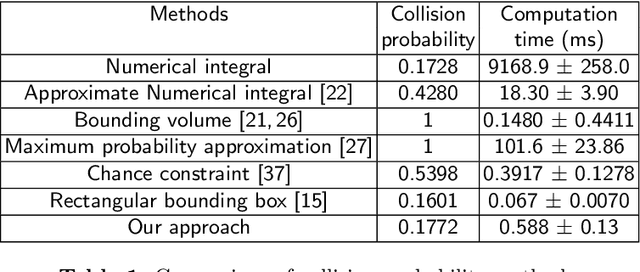


Abstract:Online generation of collision free trajectories is of prime importance for autonomous navigation. Dynamic environments, robot motion and sensing uncertainties adds further challenges to collision avoidance systems. This paper presents an approach for collision avoidance in dynamic environments, incorporating robot and obstacle state uncertainties. We derive a tight upper bound for collision probability between robot and obstacle and formulate it as a motion planning constraint which is solvable in real time. The proposed approach is tested in simulation considering mobile robots as well as quadrotors to demonstrate that successful collision avoidance is achieved in real time application. We also provide a comparison of our approach with several state-of-the-art methods.
 Add to Chrome
Add to Chrome Add to Firefox
Add to Firefox Add to Edge
Add to Edge